Last night was the third anniversary of the shooting death of Michael Brown, and, unsurprisingly, this infamous event was mostly forgotten by the populace of social media. And why should we be surprised? The human attention span, now officially shorter than that of a goldfish, cannot maintain interest in anything longer than the ever-shrinking 72-hour news cycle. Michael Brown was shot three years ago. Michael Brown is indeed exemplary of that morbid reminder, “A person dies twice: once when their breath leaves their body, and the second time, when their name is uttered for the last time.” Attributed to many, but first put forth by the ancient Egyptians, the expression seems to aptly capture poor Michael Brown’s second, slow, and rather agonizing death. After all, with the world coming down around us, and all the insanity in the public theatre, who cares about one more poor dead black kid, shot down in the mean streets on a hot August day?
Well, I personally think many people would care, if they but knew this one fact about Michael Brown, which, coincidentally, has a very great deal to do with the breaking news of this week: You thought Usain Bolt was the record holder for the fastest man in the world? You, perhaps, have weighed in on the controversy of whether or not a known doper has honestly broken Bolt’s record?
Well, they’re all wrong. Everybody in the world is wrong, but me. (Who does that sound like?) Michael Brown is (was) the Fastest Man in the World. He still holds that record. How do I know?
Because Officer Darren Wilson proved it, with his “testimony”--a fine, upstanding word from the Romans, meaning literally “to swear on one’s testicles.” That is a pretty serious oath from Wilson. And after all, police are sworn to always tell the truth.
Here it is, for your consideration: Michael Brown, the Fastest Man in the World.
THE PHYSICS OF MURDER
You can destroy evidence. You can fail to photograph the body. You can not bother to take measurements at the crime scene. You can decide not to record the testimony of the shooter. You can let the shooter process his gun. You can discredit witnesses. You can question their credibility. You can cherry pick the evidence that you show to the grand jury. You can put known liars and mentally ill persons in front of the people charged with determining the killer’s fate, and encourage those liars to sway the outcome. You can carelessly, or intentionally, give twelve well-meaning citizens instructions which are absolutely wrong. You can mislead the public. And you can manipulate the press.
There is only one thing that you cannot manipulate, mislead, suppress, cherry pick, or destroy.
The Laws of Physics. Those pesky, irrefutable, immutable Laws of Physics.
Here, we look at “The Physics of Murder”. As regards the shooting of Michael Brown.
SIXTEEN SECONDS
The Physics of Murder begins with 16 seconds. Sixteen seconds, from the time that Darren Wilson communicated through the police radio system, until he began shooting at Michael Brown. This is a matter of physics, and this cannot be debated by anybody, except for somebody who is in denial of the Laws of Nature. Somebody who is in denial of reality.
I will, of course, explain how we know all of these things to be a matter of fact.
Let’s begin with the first time stamp: Officer Darren Wilson’s communication with his dispatcher. Wilson radios for backup at 12:02 p.m. UTC (Universal Time Clock) time. August 9th, 2014, just two minutes after noon. That is according to the Ferguson Police Department’s own records. If you have doubts and wish to check the accuracy of a UTC timestamp, I assure you the evidence is abundant. (This is how accurate a UTC timestamp is. The people managing the Universal Time Clock in Colorado even add a leap second periodically, to keep it absolutely accurate. This, from the National Institute of Standards and Technology at nist.gov: “A leap second is a second added to Coordinated Universal Time (UTC) in order to keep it synchronized with astronomical time. Leap seconds are added in order to keep the difference between UTC and astronomical time (UT1) to less than 0.9 seconds. The International Earth Rotation and Reference Systems Service (IERS), measures Earth's rotation and publishes the difference between UT1 and UTC. Usually leap seconds are added when UTC is ahead of UT1 by 0.4 seconds or more. At the time the corrections started in 1972, a necessary correction of ten seconds was made to UTC, and there have been leap seconds about every year and a half, on average.”)
So. To return to the scene of the killing: Darren Wilson talks to his department at 12:02, just after noon.
A little more than sixteen seconds later, Michael Brown would be dead. How do we know that?
THOSE PESKY LAWS OF PHYSICS: UTC VS. GPS
Just as Michael Slager was no doubt horrified to learn that someone had been recording his murder of Walter Scott, and his placing of the Taser near Scott’s dying body, so Officer Darren Wilson was probably alarmed to hear that his shooting had been recorded. (Sadly, it ended up being a moot point, in regards to the grand jury, but history remembers.)
As most of us know by now, a man in an apartment nearby was chatting with a lady friend—nothing x-rated, just a sultry voice complimenting how she looks. That recording began at exactly 12:02:14. Then, in horrific contradistinction, the sound of gunfire cuts into the conversation. At the heart of this damning evidence—damning for Darren Wilson’s version of the events, that is—is a technology called Glide. As Glide brags in their description:
Because Glide is the only messaging application using streaming video technology, each message is simultaneously recorded and transmitted, so the exact time can be verified to the second.
Back to the shooter, Darren Wilson. Wilson’s shots began two seconds into the Glide tele-chat recording, so that would be 12:02:16.
Now it is only natural that readers would want to confirm the level of accuracy in the time stamps here; i.e., were the two systems—the telechat Glide App, and the emergency dispatch system that Darren Wilson was using—were they “in sync”? The answer is that emergency dispatch always operates on official State/US clock time, which is, of course, set to UTC standards. According to a reporter who goes only as “heckphilly.com”, who interviewed everybody from the people at Glide to assorted members of the police and emergency services, “Radio transmissions are usually saved and recorded via a recording device on a computer that saves everything in order … Every agency around here runs 2400 clock just set to the state’s clock so everybody is running at the same exact time … I’ve visited several, and I haven’t noticed any agency that does it differently. It’s only like that so people don’t get confused when it comes to records and such.”
Make no mistake, down-to-the-second accuracy is easy and free to obtain, and it is the gold standard for policing.
There is, then, only one more concern that needs to be addressed, and that is with regard to the timestamp on the Glide App. Was the Glide App on UTC time? Or perhaps on GPS time? Different devices track time in different ways, most by UTC, and some by GPS. Some cell phones, for example, give GPS timestamps. That means, as any rocket scientist knows, that we then have a 16 second difference between UTC time and GPS time, with GPS being 16 seconds ahead of UTC. (That has actually changed to 17 seconds, given that in summer of 2015, a leap second was added to the UTC, to keep everything completely accurate. But for the year in question, 2014, it would have been 16 seconds.) If we know that the Glide telechat began at the internal device’s GPS time of 12:02:14, with the shots beginning two seconds in, at 12:02:16 (GPS), then we only need to subtract 16 seconds from the hypothetical GPS time stamp to adjust it to a UTC timestamp. That would put the bullets beginning at exactly 12:02:00 (UTC), the precise time that Darren Wilson is on the phone and hasn’t even had the physical altercation with Brown. So we know that the Glide app cannot have been on GPS time, it had to be on the same clock as the police equipment and software: UTC time.
All of that boils down to some very damning numbers for Darren Wilson. It means that he was talking with dispatch at exactly 12:02:00 UTC time, and that he began shooting at 12:02:16, just 16 seconds later. (And that is assuming that it wasn’t 12:02 and “some seconds”; that is assuming that the police department doesn’t round off in their records, which indeed they might. Which would give Darren Wilson even less time for all the following to happen.) Sixteen seconds, for a hell of a lot to happen.
A VERY BUSY QUARTER OF A MINUTE
Within the fleeting space of just 16 seconds—a quarter of a minute—a whole slew of events had to transpire, IF we are to believe Darren Wilson’s version of reality. Let’s just look at everything that had to happen, if Darren Wilson’s story is to be believed.
- Darren Wilson called in for back-up at exactly 12:02 UTC time, according to official records. So, he had to finish up that request for back-up, put his cruiser in reverse, then back up, and swerve around so that it stopped right in front of Brown and Johnson. He then he had to stop the cruiser and turn off the ignition. Then he called Michael Brown over to his vehicle to have words with him.
- This verbal exchange set off the first of two scuffles. Beginning with the now famous door episode, in which Darren Wilson said he attempted to open the door, but Michael Brown slammed it shut on him, while Dorian Johnson (Michael’s friend and proximate witness) told a different story—that the door bounced off of Brown because Officer Wilson had screeched up so close to them.
- Then began the second scuffle, this one also having two conflicting versions, in which Darren Wilson claims that Michael Brown reached inside the cruiser to get his gun (apparently having been struck with some bizarre desire to commit Death by Cop), a gun that was holstered at Wilson’s right side, a fact which therefore required Brown to duck into the police cruiser, and then stretch his body across that of an armed police officer. Getting that gun was, according to Darren Wilson, apparently Michael Brown’s plan. (Dorian Johnson told it differently--he swore that Officer Wilson pulled Brown into the car.)
- And this one is the corker—since it was later established that Brown had run 170 feet away from the police SUV before Darren Wilson started shooting--that means that this jog of 170 feet also had to take place during the same 16 seconds during which all of the action in points 1,2, and 3 allegedly transpired. (By the way, the Ferguson Police lied about this matter initially, saying the Brown was about 30 feet from Wilson and the cop’s SUV when the shooting began. That is not a tiny amount to be “off by”. There is no plausible explanation for this lie, except that they imagine that we are as stupid as they are deceptive.)
Let’s go over all that again, in a little more detail--the goal of which is to show Darren Wilson’s version to be impossible, given the Laws of Physics. And using those same laws, we will show Wilson to be—for lack of a better term—a liar.
Alright, a mere sixteen seconds transpired between the call to the station and Michael Brown being shot.
- Darren Wilson finishes his call to the station for back up, signs off, and then decides to confront Brown and Johnson. He puts his vehicle in reverse, screeches back, swerves around, then slams on his breaks and turns off the ignition. Wilson then calls Michael Brown over, saying he wants to talk to him. They exchange words. LET’S SAY THAT ALL OF THIS HAPPENED IN 3 SECONDS.
- Then the first fight, the fight with the door begins. More words are exchanged. Darren Wilson opens his door to get out. It is shut again, either by Mike’s hand or by bouncing off of Mike. Then, it opens again; same dueling theories as above. Then it is shut again. LET’S CALL THIS THREE SECONDS. (Darren Wilson would later testify that this fight over the door and the beginning of the fisticuffs took a full 10 seconds, which would put us at a total of 13 seconds so far, but that would leave only 3 seconds remaining for the fight in the car that took so many long minutes for Darren Wilson to describe in his grand jury testimony, and for Michael Brown’s last run for his life. So let’s give the officer the benefit of a doubt, and just call the door altercation THREE SECONDS.)
- The prolonged fight in the car. In order to understand everything that happened in the front seat of that cruiser, let us go right to Darren Wilson’s own words in front of the grand jury, so we can accurately and explicitly glean from the officer himself all the things that happened during that fight in the front seat of his SUV. Keep in mind that before the second scuffle begins, we have already used up 6 (3+3) seconds of the 16 seconds, leaving just 10 seconds left.—and that Michael Brown also will need to run 170 feet before the shooting starts. (If, of course, we are to believe Darren Wilson’s version of events.) The following is the verbatim testimony from Darren Wilson, as he described the events that happened within the car to the grand jury:
BEGIN DARREN WILSON’S GRAND JURY EXCERPT:
(grammar uncorrected)
… And they kept walking, as I said, they never once stopped, never got on the sidewalk they stayed in the middle of the road. So I got on my radio, and Frank 21 is my call sign that day, I said Frank 21 I'm on Canfield with two, send me another car. I then placed my car in reverse and backed up and I backed up just past them and then angled my vehicle, the back of my vehicle to kind of cut them off kind to keep them somewhat contained. As I did that, I go to open the door and I say, hey, come here for a minute to Brown. As I'm opening the door he turns, faces me, looks at me and says, "what the fuck are you going to do about it", and shuts my door, slammed it shut. I haven't even got it open enough to get my leg out, it was only a few inches. I then looked at him and told him to get back and he was just staring at me, almost like to intimidate me or to overpower me. The intense face he had was just not what I expected from any of this.
I then opened my door again and used my door to push him backwards, and while I'm doing that I tell him to, "get the fuck back", and then I use my door to push him. … He then grabs my door again and shuts my door. At that time is when I saw him coming into my vehicle. His head was higher than the top of my car. And I see him ducking and as he is ducking, his hands are up and he is coming in my vehicle. I had shielded myself in this type of manner and kind of looked away, so I don't remember seeing him come at me, but I was hit right here in the side of the face with a fist. I don't think it was a full on swing, I think it was a full on swing, but not a full shot. I think my arm deflected some of it, but there was still a significant amount of contact that was made to my face. … I believe it was his right, just judging by how we were situated. But like I said, I had turned away, had my eyes, I was shielding myself. … After he hit me then, it stopped for a second. He kind of like, I remember getting hit and he kind of like grabbed and pulled, and then it stopped. When I looked up, if this is my car door, I'm sitting here facing that way, he's here. He turns like this and now the Cigarillos I see in his left hand. He's going like this and he says, "hey man, hold these." … And he reaches back and he says, "hey man, hold these." I'm assuming to Johnson, but I couldn't see Johnson from my line of sight. … And he said, "hey man, hold these." And at that point I tried to hold his right arm because it was like this at my car. This is my car window. I tried to hold his right arm and use my left hand to get out to have some type of control and not be trapped in my car any more. And when I grabbed him, the only way I can describe it is I felt like a five year old holding onto Hulk Hogan. … Hulk Hogan, that's just how big he felt and how small I felt just from grasping his arm. And as I'm trying to open the door is when, and I can't really get it open because he is standing only maybe 6 inches from my door, but as I was trying to pull the handle, I see his hand coming back around like this and he hit me with this part of his right here, just a full swing all the way back around and hit me right here.
After he did that, next thing I remember is how do I get this guy away from me. What do I do not to get beaten inside my car. I remember having my hands up and I thought to myself, you know, what do I do. I considered using my mace, however, I wasn't willing to sacrifice my left hand, which is blocking my face to go for it. I couldn't reach around on my right to get it and if I would have gotten it out, the chances of it being effective were slim to none. His hands were in front of his face, it would have blocked the mace from hitting him in the face and if any of that got on me, I know what it does to me and I would have been out of the game. I wear contacts, if that touches any part of my eyes, then I can't see at all. Like I said, I don't carry a Taser, I considered my asp, but to get that out since I kind of sit on it, I usually have to lean forward and pull myself forward to the steering wheel to get it out. Again, I wasn't willing to let go of the one defense I had against being hit. The whole time, I can't tell you if he was swinging at me or grabbing me or pushing me or what, but there was just stuff going on and I was looking down figuring out what to do. Also, when I was grabbing my asp, I knew if I did even get it out, I'm not going to be able to expand it inside the car or am I going to be able to make a swing that will be effective in any manner. Next I considered my flashlight. I keep that on the passenger side of the car. I wasn't going to, again, reach over like this to grab it and then even if I did grab it, would it even be effective. We are so close and confined. So the only other option I thought I had was my gun. I drew my gun, I turned. It is kind of hard to describe it, I turn and I go like this. He is standing here. I said, "get back or I'm going to shoot you." He immediately grabs my gun and says, "you are too much of a pussy to shoot me." I believe gun was basically pointed this way. I'm in my car, he's here, it is pointed this way, but he grabs it with his right hand, not his left, he grabs with his right one and he twists it and then he digs it down into my hip. I felt that another one of those punches in my face could knock me out or worse. I mean it was, he's obviously bigger than I was and stronger and the, I've already taken two to the face and I didn't think I would, the third one could be fatal if he hit me right. He grabs my gun, says, "you are too much of a pussy to shoot me." The gun goes down into my hip and at that point I thought I was getting shot. I can feel his fingers try to get inside the trigger guard with my finger and I remember envisioning a bullet going into my leg. I thought that was the next step. As I'm looking at it, I'm not paying attention to him, all I can focus on is just this gun in my leg. I was able to kind of shift like this and then push it down, because he is pushing down like to keep it pinned on my leg. So when I slid, I let him use his momentum to push it down and it was kind of pointed to where the seat buckle would attach on the floorboard on the side of my car. Next thing I remember putting my left hand on it like this, putting my elbow into the back of my seat and just pushing with all I could forward. Like I said, I was just so focused on getting the gun out of me. When this point, he is still holding onto it and I pulled the trigger and nothing happens, it just clicked. I pull it again, it just clicked again. At this point I'm like why isn't this working, this guy is going to kill me if he gets ahold of this gun. I pulled it a third time, it goes off. When it went off, it shot through my door panel and my window was down and glass flew out of my door panel. I think that kind of startled him and me at the same time. When I see the glass come up, it comes, a chunk about that big comes across my right hand and then I notice I have blood on the back of my hand. After seeing the blood on my hand, I looked at him and he was, this is my car door, he was here and he kind of stepped back and went like this. And then after he did that, he looked up at me and had the most intense aggressive face. The only way I can describe it, it looks like a demon, that's how angry he looked. He comes back towards me again with his hands up. At that point I just went like this, I tried to pull the trigger again, click, nothing happened. … Last thing I saw was this coming at me. … I just saw his hands up, I don't know if they were closed yet, on the way to going closed, I saw this and that face coming at me again, and I just went like this and I shielded my face. … Went like this and shielded my face … So I pulled the trigger, it just clicks that time. Without even looking, I just grab the top of my gun, the slide and I racked it, and I put my, still not looking just holding my hand up, I pulled the trigger again, it goes off. When I look back after that … It went off twice in the car. Pull, click, click, went off, click, went off. So twice in the car. … When I look up after that, I see him start cloud of dust behind him. I then get out of my car. As I'm getting out of the car I tell dispatch, "shots fired, send me more cars." We start running, kind of the same direction that Johnson had pointed. Across the street like a diagonal towards this, kind of like where the parking lot came in for Copper Creek Court and Canfield, right at that intersection. And there is a light pole right there, I remember him running towards the light pole. We pass two cars that were behind my police car while we were running. I think the second one was Pontiac Grand Am, a green one. I don't know if it was a two door or four door, I just remember seeing a Pontiac green Grand Am.”
HERE ENDS DARREN WILSON’S GRAND JURY TESTIMONY.
(Above from Case: State of Missouri v. Darren Wilson, Grand Jury Volume V, September 16, 2014, Section V, 209-216, and pages 223 – 226)
So, of the 16 seconds between the radio call and the shooting, we had assigned 3 seconds to Darren finishing his call to dispatch, and then maneuvering his vehicle back and around, then addressing Michael Brown and turning off the ignition. And then another 3 seconds, paring it down considerably from Wilson’s own estimate, to the back-and-forth opening and slamming of the door repeatedly. That’s 6 of the 16 seconds, not counting the time that Michael Brown will need to run 170 feet before “turning” and “looking like a monster”, the apparent provocation for Darren Wilson to start shooting.
So, let’s say that the above several pages of description, dialogue, fighting, attempts at firing, firing, etc. took only 6 seconds. Personally I find that ridiculous, improbable, impossible, outrageous. But let’s say it took only 6 seconds.
That is:
3 seconds for Wilson to end precinct call, then car reversing, swerving around, and Wilson then addressing Brown.
3 seconds for the back and forth door altercation.
6 seconds time for all the italics bold action in Wilson’s above grand jury excerpt to take place.
That means 4 seconds left for Michael Brown to cover 170 feet. Which basically makes him the fastest man in the world. In 2009, Usain Bolt set an unbroken record of running the 100 meter dash in 9.58 seconds. That translates to 10.4384133612 meters per second. A meter is 3.28084 feet. That means—and we are rounding off here—that Usain Bolt was running at over 30 feet per second. But Michael Brown only has 4 seconds left, in our 16 seconds and ticking clock, 4 seconds to run 170 feet. All of this means that Michael Brown had to run over 40 feet per second, in order for Darren Wilson’s magical mystery math to work. Michael Brown, overweight and out of shape (sorry, Big Mike), and running barefoot (he lost both shoes as he fled), had to run 25 percent faster than Usain Bolt, in order for Darren Wilson to be telling the truth.
Assuming of course, that the Laws of Physics are still in place.
I thank you for hanging in there with me, but now we know everything that would have to have happened, from the time of Darren Wilson calling the station, to the time he began firing shots, all within 16 seconds, if Officer Wilson’s version of events is to be believed.
Or wait …
…Maybe it is as 15 witnesses said. Maybe the reason that so much happened in such a short time is that Michael Brown did not run 170 feet before the bullets started flying; maybe Darren Wilson started firing as soon as he got out of the car. Maybe Darren Wilson is just another dirtbag “Michael Slager” type cop, firing at a terrified, fleeing kid.
I guess it all depends on how you feel about the laws of physics.
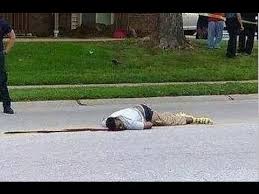

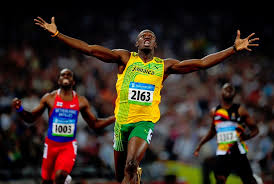
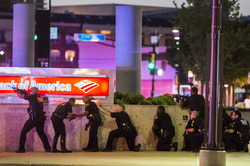
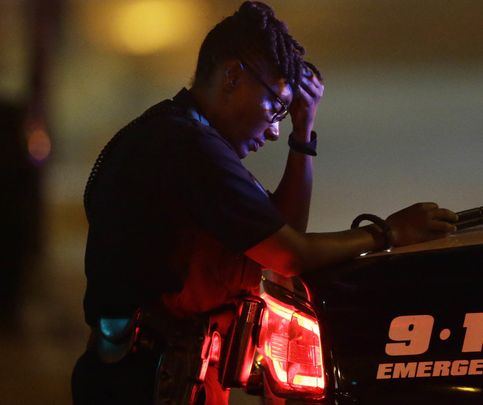

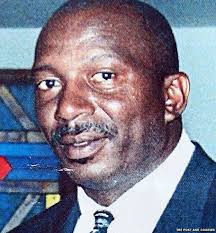
 RSS Feed
RSS Feed